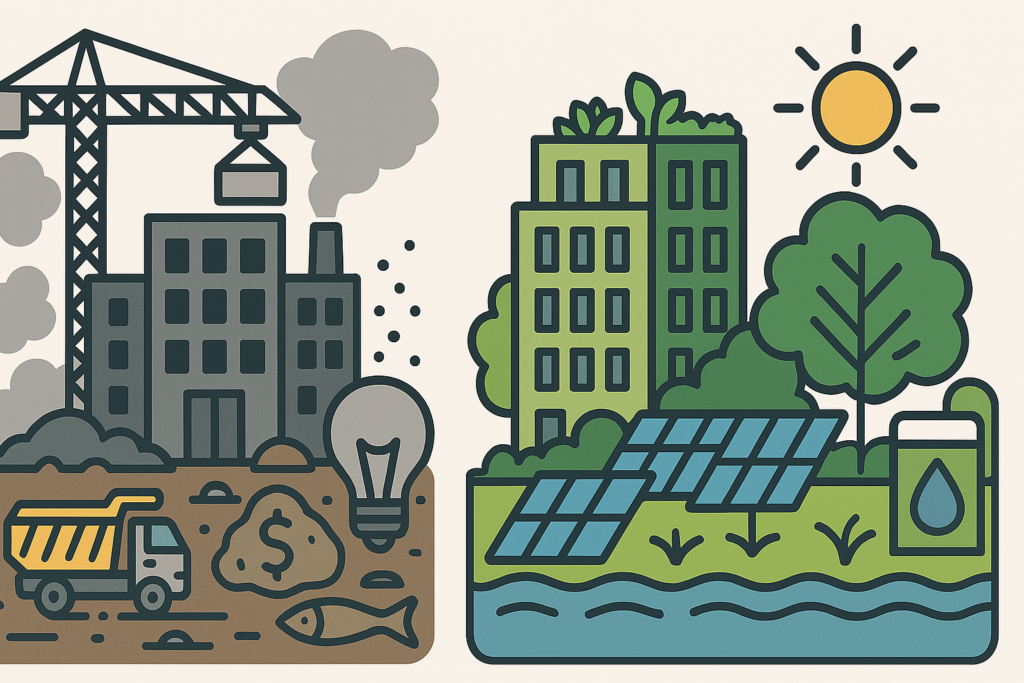
In crude terms, progress has come to mean the expansion of concrete, sweetly named the real estate. But this progress may be coming at an extremely high cost
India’s rapid economic expansion is transforming skylines and fuelling dreams, but at what cost to the environment? As the nation trumpeted its climate commitments at the World Economic Forum in Davos, the reality on the ground tells a more complex story.
Buildings: The silent resource guzzlers
According to Santhosh Kumar, Vice Chairman of ANAROCK Group, Indian buildings are voracious consumers:
- 40% of national energy
- 30% of raw materials
- 20% of water and land use
They also generate a staggering 40% of carbon emissions and 30% of solid waste. With nearly 70% of India’s 2030 building stock yet to be constructed, the environmental stakes are only getting higher.
Urban growth threatens biodiversity
India’s booming infrastructure—highways, SEZs, and sprawling townships—often comes at the expense of agriculture and tree cover. Rising incomes and changing lifestyles are placing unprecedented demands on natural resources, with unsustainable consumption patterns visible in homes across the country.
Regulation: Plenty on paper, patchy in practice
Environmental Impact Assessment (EIA) has been mandatory for major projects since 1994 and was strengthened in 2006. Yet, enforcement remains inconsistent. “The real estate industry’s record of self-regulation is dismal,” notes Kumar. In Bengaluru, for example, nearly a third of housing projects flouted the National Green Tribunal’s 75-metre lake buffer rule, contributing to the pollution of water bodies like Bellandur Lake.
The looming resource crunch
With most of India’s future buildings yet to rise, the country faces a daunting challenge. By contrast, in the UK, over 80% of the buildings needed by 2050 are already up, reducing future environmental strain. India’s cities, meanwhile, are on track to consume resources at an unsustainable rate unless urgent action is taken.
What’s the way forward?
- Green tech offers hope: Advances in solar energy, energy-efficient systems, water recycling, and rainwater harvesting could transform India’s construction landscape. But responsibility doesn’t rest with developers alone—urban planners, architects, government bodies, and even homebuyers must play their part.
- Political will and local action: There are glimmers of hope. Cochin International Airport, now fully solar-powered and recognised by the UN, demonstrates what’s possible with vision and commitment. Some cities are embracing transit-oriented development and reforming land-use rules to encourage greener, denser, and more mixed-use neighbourhoods.
The bottom line
India’s local governments face the mammoth task of making cities more inclusive, resilient, and sustainable. The time to act is now—before the nation’s building boom becomes an environmental bust.






